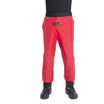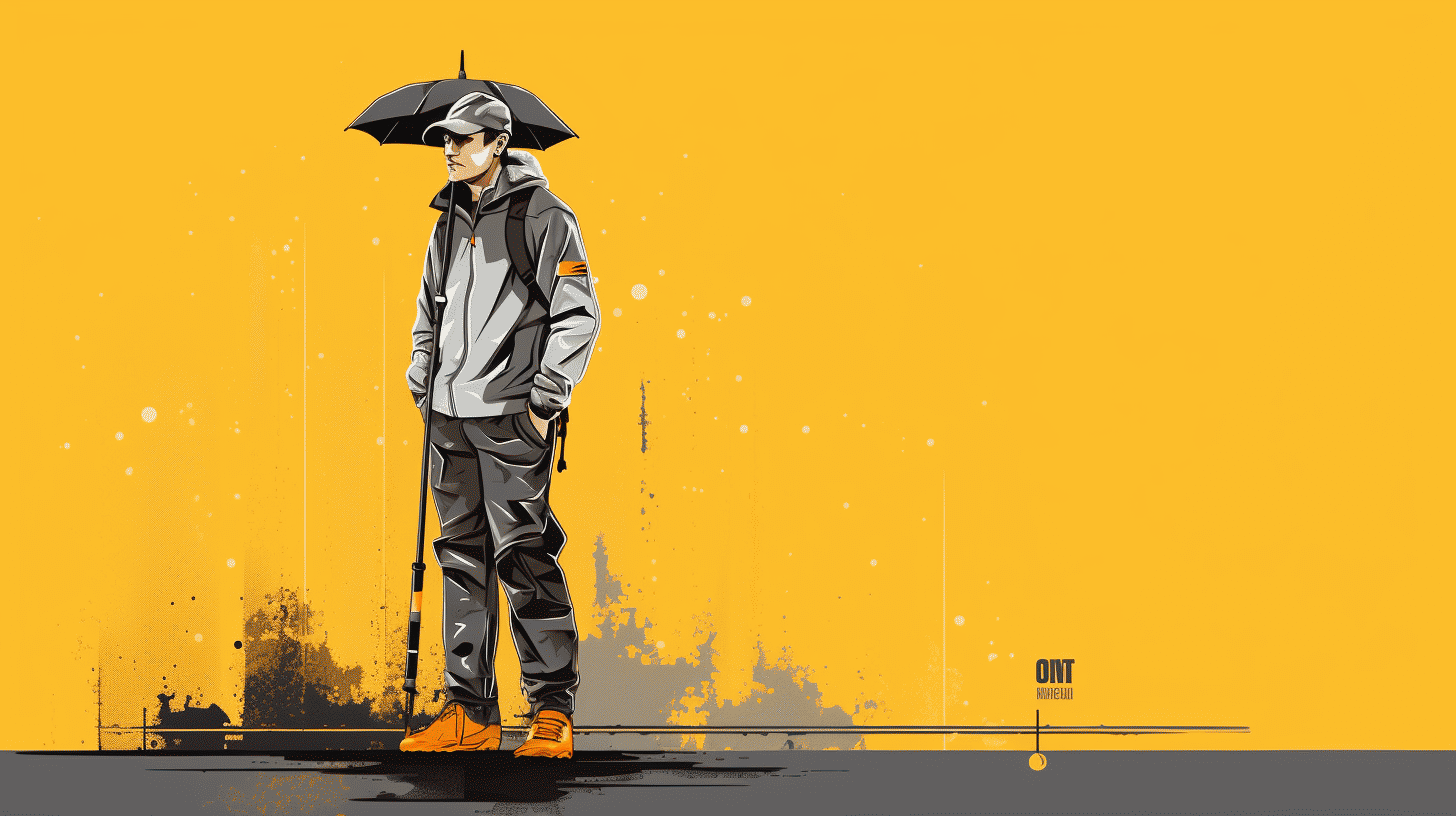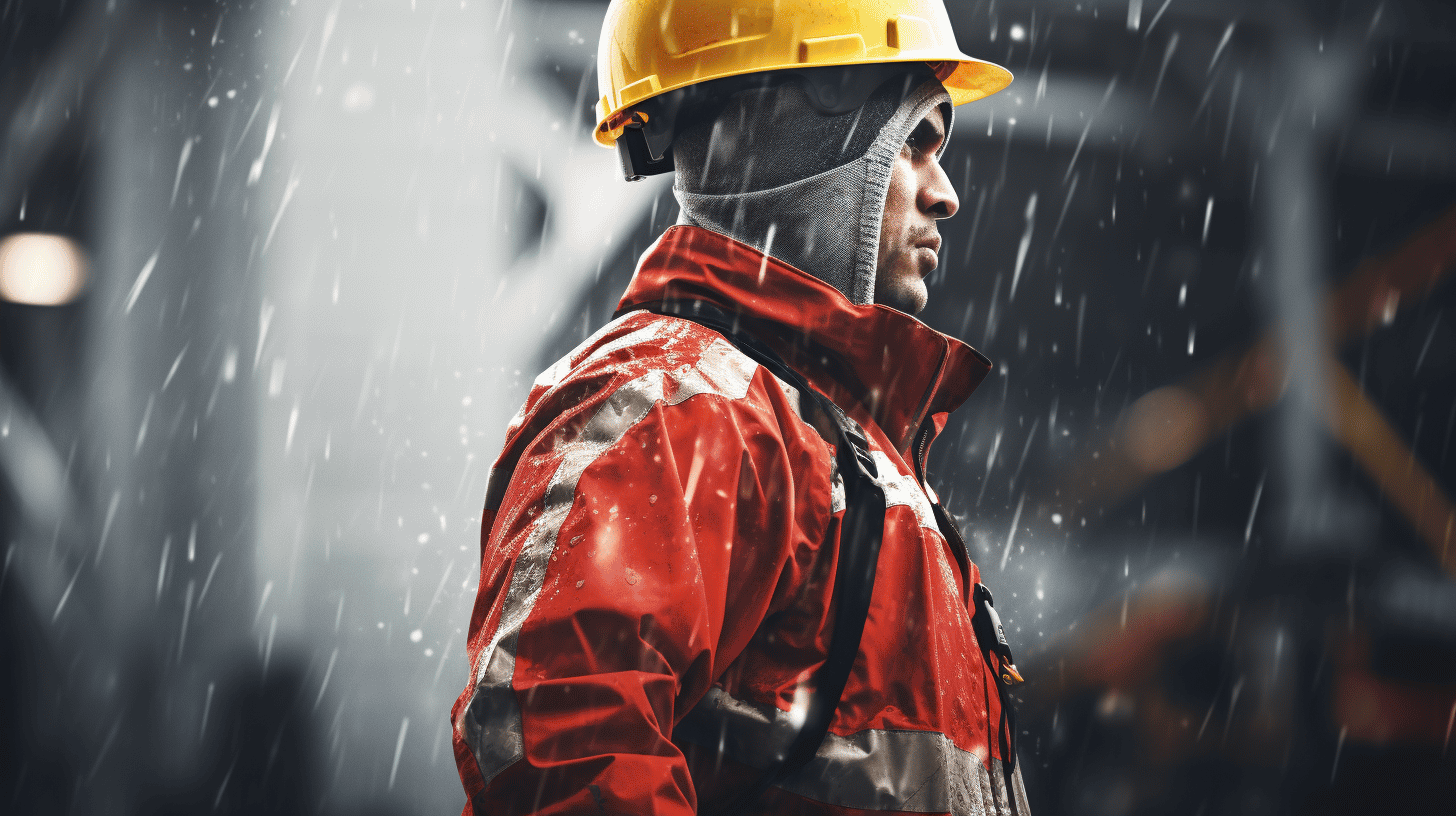Everyone knows that construction work does not stop for rain. Whether it's a light drizzle or a mighty downpour, construction workers often have no choice but to press on. Braving the elements, they continue their crucial work, building and repairing our roads, homes, and institutions. But how can they endure such conditions without compromising their safety and efficiency? The answer lies in high-quality rain gear designed for heavy-duty use and inclement weather conditions.
In this article, we'll explore the top waterproof and tear-resistant rain gear options for construction work, and talk about the importance of durability, waterproof ratings, and tear-resistance in construction garments. We’ll also touch upon the growth and estimated size of the global rainwear market, and emphasize how quality rain gear brands are striving towards sustainability. So grab yourself a hot beverage, and let's delve into the fascinating world of rain gear for the hardworking construction worker.
Remember, proper attire is not just about staying dry and comfortable—it's an integral part of ensuring workplace safety and productivity, especially in an industry where delays can mean major financial impact. Read on!
Global Rainwear Market Overview
Rain, in its rhythmic downpour, paints a beautiful retort to the scorching summer. But with these showers come the need to shield oneself from the wet, attracting a prominent global market for rainwear. Rainwear, be it boots, coats, or umbrellas, has been experiencing rapid market expansion. The increasing diversity of this market comes with a more comprehensive range of products, meeting consumers' demands, from practical necessity to high-end fashion statements. Let's dive deeper into the world of rainwear and emerge with a clear image of its projected growth and estimated market size by 2030.
Projecting Growth
There is an old saying, "There's no such thing as bad weather, only unsuitable clothing." This philosophy rings true for the global rainwear market as it continues to flourish, even during climate variations and fashion transitions. According to the latest statistical data, the global rainwear market is projected to reach an illuminating $1,862.6 million by 2030, growing at a significant CAGR of 6.0% from 2021 to 2030.
The booming e-commerce sector, coupled with the ubiquitous availability of diverse rainwear range, has fueled and will continue to fuel the rise in global rainwear market's valuation. Technological advancements in water-resistant materials and the introduction of fashionable, utility-based rainwear are anticipated to steer this growth further, transforming rainwear from a monsoon essential to year-round attire.
Estimating Market Size by 2030
"Rain or shine, we're prepared" seems to be the anthem for the rainwear market, given the soaring market size estimates by 2030. Pinning down an exact number, the rainwear market is anticipated to achieve a colossal value of $2.2 billion by 2031. This projection provides a vital insight into the scope of opportunities available for those wishing to venture into or expand within this market.
The main catalysts driving this growth include heightened awareness about sustainable rainwear options, emerging innovations in fabric technology, and an increasing affinity for outdoor activities, regardless of the weather conditions. With these trends showing no signs of dwindling, it's safe to say that the rainwear market could exceed the dew drops in terms of numbers.
The rainwear market's dynamic growth projections suggest an auspicious future. It's an opportunity for businesses to take a leap of faith into the puddles of this thriving market. So, let's open our umbrellas and walk confidently into the drizzle of opportunities coming our way.
Remember, every raindrop marks the growth of this market. So, the next time it rains, look beyond the drops and see the ocean of opportunities that lies within the global rainwear market.
Importance of Waterproof and Tear-resistant Gear in Construction
In the robust world of construction, conditions are not always favorable. More often than not, workers have to battle elements such as rain and whipping winds that not only endanger their safety but also hamper productivity. Therein lies the increasing demand for waterproof and tear-resistant gear. Emergent technologies are transitioning this from a mere luxurious utility to a must-have for every construction worker tackling harsh weather.
Durability
Sturdiness is paramount in any construction gear, and this rings true for waterproof and tear-resistant clothing as well. It's not just about keeping dry; the gear also needs to withstand the rigors of demanding physical labor. Whether it's heavy equipment usage or unexpected site debris, construction workwear should be resilient enough to handle any unforeseen challenges.
Strategic reinforcement in high-wear areas such as elbows, knees, and any equipment-bearing sections is integral to extending the lifespan of waterproof wear. By investing in rain gear that can handle tough conditions, construction companies ensure longevity and durability, effectively getting a better return on their investment.
Waterproof Ratings
The quality of waterproof gear can be judged using a standard measurement known as the waterproof rating. Outstanding rain jackets typically have a waterproof rating exceeding 20,000mm, coupled with a breathability measurement around 35,000g.
Conversely, gear with water-resistant attributions may falter under prolonged exposure to heavy rain and intense winds. So, while they may seem monetarily attractive in the short-term, they might not provide the intended protection in the long haul. Always remember, it's not just about the immediate benefit, but rather, how the gear performs under repetitive, intense conditions.
Tear-resistance
Tear-resistant gear can withstand considerable strain and hostile conditions without losing functionality. This attribute is of paramount importance for construction workers who operate amidst various tear-prone scenarios. Furthermore, tear-proof gear often offers additional protective features such as abrasion resistance and anti-snag properties.
The ability to prevent tears and rips translates into gear that retains its integrity for longer, reducing the frequency of replacements and thus, overall costs. It's an upfront investment that reaps benefits forwarded in saved time, money, and enhanced worker safety.
Embracing durable, waterproof, and tear-resistant gear in construction isn't a luxury—it's an essential safety measure. For workforces braving the elements daily, these features make all the difference in their performance, safety, and well-being on the job. Protect your team adequately, and watch productivity go through the roof.
Diverse Types of Rain Gear
When it comes to braving the elements, not all rain gear is created equal. Certain types are designed to serve robust purposes, while others value breathability and lightweight construction. How you plan to utilize your gear and in what conditions ought to guide your selection. Let's dissect two of the premier options in the market today: Hardshell Rain Jackets and Waterproof-breathable Garments.
Hardshell Rain Jackets
Designed for the harshest climates, Hardshell Rain Jackets are generally hefty, durable, and offer superior water and wind resistance. Their robust construction makes them perfect for prolonged exposure in heavy rain, but it's crucial to bear in mind that they may lose their water resistance over time. The jackets typically use water-resistant coatings or membranes and may need to be replaced if they lose their original qualities over a long period of heavy use. However, for individuals looking for a sturdy, dependable option that can deal with serious weather, Hardshell Rain Jackets are an excellent pick.
Waterproof-breathable Garments
What happens when you're working in variable conditions — maybe it's hot, it's a little drizzly, or you're engaged in active work like construction? This is precisely where Waterproof-breathable Garments shine. Sporting a more complex design with layered textile materials and specialized membranes, they couple robust rain protection with excellent breathability. Certainly, the opulence of this hybrid design tends to make them the most expensive rain gear option. Nonetheless, for people involved in physically demanding activities—construction or hiking, for instance—this gear keeps you dry and cool at the same time.
If you're in the construction industry, for instance, and you're tasked with Choosing the best rain gear, weigh your requirements against each type's strengths and weaknesses. At the end of the day, the key is to select a waterproof design that aligns with your specific needs. Stay dry, safe, and comfortable — no matter what Mother Nature throws at you!
Quality and Sustainability in Rainwear Market
The rise of sustainability consciousness has brought significant transformation in many industries, and the rainwear market has not been left behind. With the dual priority of quality and eco-friendliness, consumers and manufacturers are redefining what it means to stay dry in a downpour. This change is driving brands to innovate - focusing on rainwear that delivers performance without compromising the planet.
Quality Rain Gear Brands
When it comes to high-quality rain gear, certain brands understandably take the lead. One particularly lauded brand to consider is Helly Hansen with their HH Gale jacket. This robust weather-protective gear is not just an average raincoat. Thanks to its stretchable design, it allows for comfortable movement while working – a feature that outdoor enthusiasts and professionals truly appreciate.
Another noteworthy mention is the Marmot brand. Their PreCip Eco Jacket is a powerful testament to the possibilities of integrating quality with eco-consciousness. Made from recycled materials, this lightweight and breathable raincoat combines performance with planet-friendly practices.
- Helly Hansen HH Gale Jacket: Adjourned for its stretchability and comfort during work.
- Marmot PreCip Eco Jacket: Known for its eco-friendliness with recycled material construction without compromising breathability or weight.
Eco-friendly Rain Gear
For those searching for eco-friendly rain gear, brands incorporating recycled materials and eco-conscious practices are seeing an upward trend. For many, it's not just keeping dry; it's also about doing right by nature. With brands like Marmot leading the way, recyclability is now becoming a norm in the rainwear market.
Within the hunting community, demand for sustainable rain gear is particularly high. Rain jackets featuring waterproof and breathable membranes are deemed ideal by hunters. These jackets deliver on all fronts - be it in keeping the hunter dry, comfortable, or proving non-disruptive towards the environment.
"Imagine a world where every raindrop that lands on your rain gear helps rather than harms the planet…"
This enchanting vision is steadily becoming a reality as the Rainwear market transformation continues to happen. With quality brands leading the way in integrating sustainability into their products, the future might be closer than we think.
Conclusion
Mother nature is unpredictable; one can only hope to adapt and protect themselves in the best way possible. Construction workers, more than most, have the harsh task of braving the elements while ensuring the momentum of their projects isn't hindered. Essential to this ordeal, investing in robust, waterproof, and tear-resistant rain gear is crucial for their safety, comfort, and overall productivity.
From the hyper-growth projected in the global rainwear market, it's clear that the world recognizes this necessity too. The emphasis on quality and sustainability further provides a promising outlook on the future of this industry. Brands like Rain Gear Pro are leading the pack with their top-notch designs that blend protection, comfort, and breathability seamlessly. Their handcrafted gear are pinnacles of durability and practicality.
2020 may mark the start of this booming era for the rainwear market, but the consistent innovation and strides towards sustainability promise an even more vibrant future. Remember, having the right gear can not only protect you from the weather but can also enhance your performance, productivity, and overall well-being at work. Explore all the wonderful options available at Rain Gear Pro, and prepare to face even the roughest weather conditions head-on.
Frequently Asked Questions
-
What are the best waterproof rain gear options for construction work?
The best waterproof rain gear options for construction work include: 1. Gore-Tex rain jackets, 2. PVC rain suits, 3. Neoprene rain pants, 4. Rubberized rain boots, and 5. Waterproof gloves.
-
What is the importance of using waterproof and tear-resistant rain gear for construction work?
Using waterproof and tear-resistant rain gear is crucial for construction work as it protects workers from getting wet and keeps them comfortable, preventing the risk of hypothermia. Tear-resistant gear ensures durability and longevity, providing reliable protection in challenging work environments.
-
How do I choose the right rain gear for construction work?
When choosing rain gear for construction work, consider factors such as waterproof rating, breathability, durability, comfort, range of motion, visibility features, and thermal insulation. Opt for high-quality and reputable brands that specialize in workwear and outdoor gear.
-
Can I use regular rain gear for construction work?
While regular rain gear may offer some protection against light rain, it is not suitable for the rigorous demands of construction work. Construction requires specialized rain gear designed to withstand rough conditions, provide durability, and offer enhanced safety and comfort features.
-
Are there any safety standards or certifications to look for in construction rain gear?
Yes, when purchasing rain gear for construction work, look for certifications such as ANSI/ISEA 107 for high-visibility clothing, ASTM F2732 for thermal insulation, and ASTM D6413 for flame resistance. These standards ensure that the gear meets specific safety requirements.























Leave a comment
This site is protected by hCaptcha and the hCaptcha Privacy Policy and Terms of Service apply.